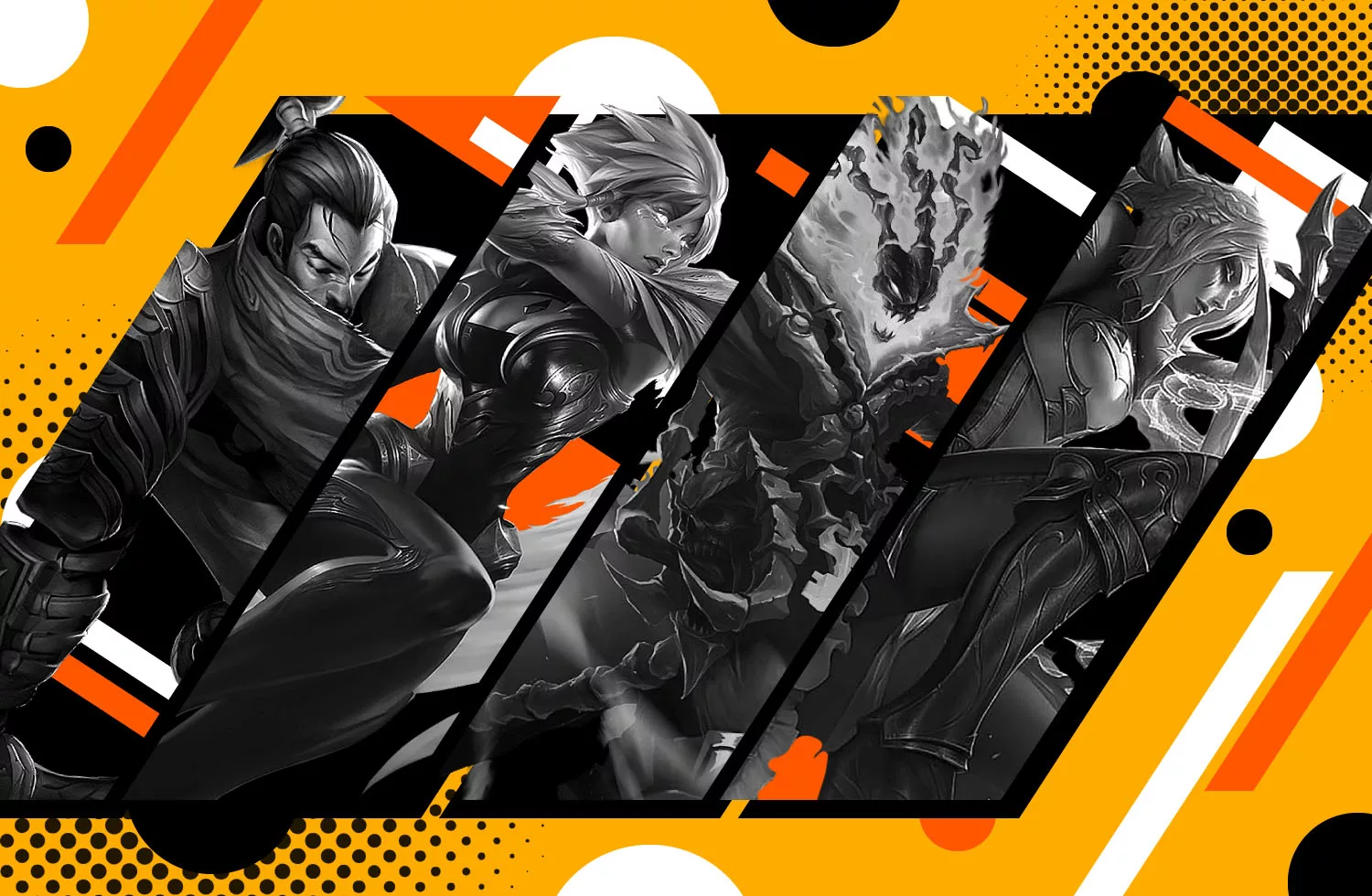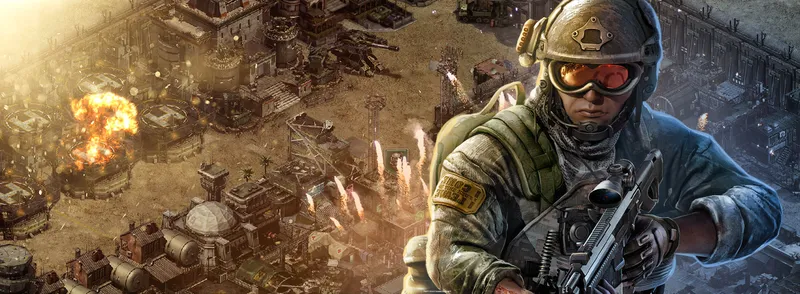
League of Legends, also known as LoL, has been one of the most popular games since its launch in 2009. This multiplayer online battle arena (MOBA) game from Riot Games has a massive competitive scene, with the 2024 LoL Worlds hosting a $2.2 million prize pool. If you’re looking to get into competitive play, the best thing to do is get started with understanding League of Legends ranks.
This MOBA offers both casual and ranked game modes, though ranked is where you really get to test your skills. Today, you’ll learn how ranks and matchmaking in ranked mode works and some tips for climbing the ladder.
What Are League of Legends Ranks?
Ranked mode in League of Legends is a competitive player-versus-player (PvP) system that matches players with similar skill levels. This mode provides you with a more challenging and rewarding experience compared to the casual game mode. As you earn LoL ranks, the game places you in a specific tier based on your performance.
LoL’s ranked mode is for more competitive players, and you can improve your odds of ranking up the ladder by using the best champions. When players reach higher ranks, they face better players who better understand game mechanics and various strategies.
LoL Ranks Explained

The League of Legends ranks categorize the game’s players into their appropriate skill levels, allowing for matches with evenly skilled players. Many gamers take the ranked system seriously — doing your best in these matches is crucial so you don’t let your team down and potentially lose LP for everyone.
There are 10 ranks with four divisions within each rank, and every win gains you League Points (LP) that help you climb the ranked ladder to higher tiers. But if you lose, you lose LP and can drop in rank. Each ranked tier has divisions that go from one to four using Roman numerals I, II, III, and IV, with one being the division right before you rank up to the next tier.
LoL Rank Distribution 2024

As players reach higher ranks in League, they become part of a select few. When hardcore players reach the highest three ranks in League of Legends, also known as the “Apex Tiers”, they’re within a group that’s less than 0.1% of the over 100 million monthly players.
The following ranked distribution is from Soloqueue, the primary competitive mode where players queue alone and are matched with four other random players.
| Rank | Percentage distribution |
| Iron | 14% |
| Bronze | 21% |
| Silver | 22% |
| Gold | 18% |
| Platinum | 12% |
| Emerald | 8% |
| Diamond | 2.4% |
| Master | 0.32% |
| Grandmaster | 0.05% |
| Challenger | 0.02% |
The highest rank, Challenger, is the exclusive home to the top 300 Solo and Duo queue players as well as the top 200 Flex 5v5 players within a region. To achieve Challenger rank, you need a minimum of 500 LP, and this is where pro- and semi-pro players are found.
How Does LoL Ranked MMR Work?
Within all League ranks, there is a hidden factor that significantly influences your matchmaking and rank progression: the Matchmaking Rating (MMR) system. Like many other competitive PC games, a numerical value represents your true skill level based on your past wins and losses. The goal of the MMR system is to match you with teammates and opponents close to your skill level.
A higher MMR indicates superior skill, leading to matches against tougher opponents. Conversely, a lower MMR leads to easier matchups. While your rank is visible, this hidden MMR can lead to various outcomes. For example, if your MMR is significantly higher than what your rank level shows, you may experience faster rank progression. If you have a lower MMR, you’re more likely to experience a slower progression and possibly a loss of LP.
What Is LoL Rank Decay?
Rank decay is a system in League of Legends designed to prevent players from maintaining higher ranks without actively playing. This primarily affects players in the Diamond rank and above. In short, if you reach a high rank and stop playing regularly, you can lose your rank.
Once you reach the higher tiers, players can earn “banked days” so they don’t have to play constantly. Banked days allow players to maintain rank without playing constantly, and you can earn them by simply playing. For example, if you have 10 banked days after playing regularly and couldn’t play for a week due to getting busy, the system would use seven of your banked days, allowing you to maintain your rank.
To avoid rank decay, you need to maintain regularity with a positive win rank. It’s also essential to manage your time effectively and make ranked games part of your routine. This is especially important if you’re running out of banked days. Sometimes, breaks from the game are necessary, but just be mindful of rank decay and your banked days.

Tips for Climbing the Ranks in League of Legends
Ranked play is much different from League’s casual mode. If you’re looking to be a more competitive LoL player and climb the ranked ladder, the following tips can help you develop good habits to reach those higher ranks:
- Focus on a few champions: There’s an old figure of speech about being a “jack of all trades but master of none,” and this is true for LoL as well. It’s better to focus on becoming extremely skilled with a few champions rather than being mediocre at all of them.
- Learn one primary role and one secondary role: It’s helpful to practice with champions who can fill multiple roles so you have a well-rounded team and a backup if someone else chooses one of your preferred roles. This means cooperating with your team and practice champions who can be support, jungler, solo top or mid lane, or attack damage carry (ADC).
- Ward frequently and buy Control Wards: Players often make the mistake of simply buying items that make their character stronger or tankier, but wards are essential. Wards give you vision of the map, help you avoid being ganked, and give your team opportunities to catch the opponent off guard.
- Improve your map awareness: To level up your game significantly, improve your map awareness. Regularly checking your mini-map lets you know if your team needs backup or if the opponents are missing. By having map awareness, you can avoid unnecessary deaths and take advantage of opportunities that can help your team win.
Explore More Competitive Games Like League of Legends
League of Legends offers a deep and competitive ranked experience, but it’s not the only popular game out there in the MOBA genre. Games like DOTA 2 and Smite offer similar gameplay with unique characters to explore and use in battle.
Strategy enthusiasts will also find the world of mobile gaming boasts a rich library of titles that offer unique twists on competitive strategy and team-based battles. If you’re looking for a fresh take on competitive gameplay, explore more PvP games that can help you show your mettle online.
League of Legends Ranks FAQ
We covered quite a bit about League of Legends ranks, and here are some more answers to frequently asked questions about the game.
What Are the Differences Between Solo/Duo Queue and Flex Queue?
Solo/Duo Queue is a competitive game mode where players queue alone or with one other person in LoL ranked mode. Flex Queue is a more relaxed game mode where players can queue in groups of up to five.
How Does Promotion and Demotion Work in LoL?
In LoL ranked mode, you gain LP for wins and lose LP for losses. Reaching 100 LP in a division promotes you to the next division, while losing all of your LP in a division can result in a demotion.
What Are Ranked Rewards in League of Legends?
Ranked rewards in LoL are exclusive in-game items like skins, emotes, and champion shards. They’re earned by reaching specific rank tiers or accumulating Split Points throughout the season.
What Are Placement Matches in League of Legends?
Placement matches are the initial games you play at the start of a new ranked season or split to determine your starting rank based on your accumulated performance.








